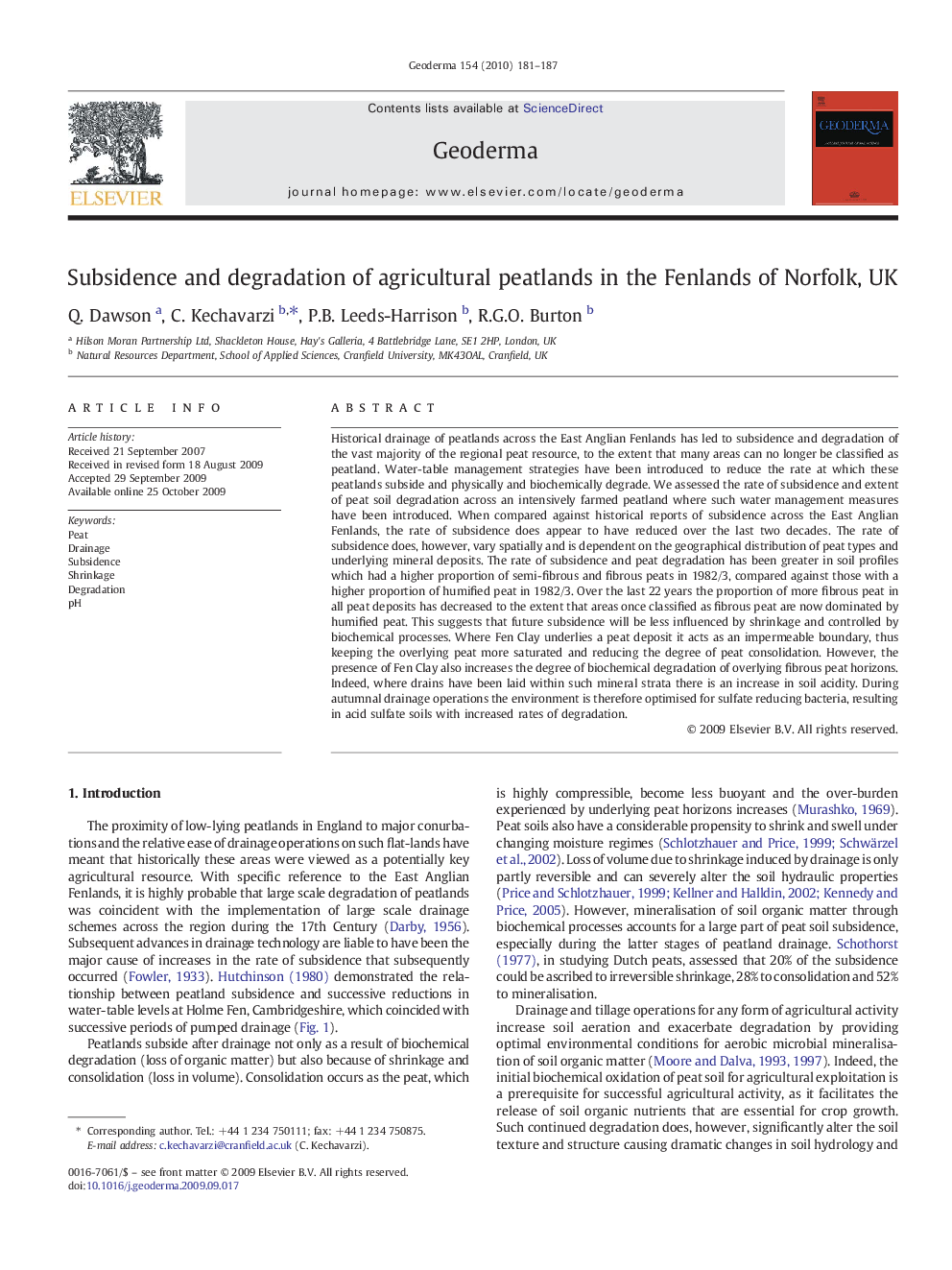| کد مقاله | کد نشریه | سال انتشار | مقاله انگلیسی | نسخه تمام متن |
|---|---|---|---|---|
| 4574984 | 1629525 | 2010 | 7 صفحه PDF | دانلود رایگان |

Historical drainage of peatlands across the East Anglian Fenlands has led to subsidence and degradation of the vast majority of the regional peat resource, to the extent that many areas can no longer be classified as peatland. Water-table management strategies have been introduced to reduce the rate at which these peatlands subside and physically and biochemically degrade. We assessed the rate of subsidence and extent of peat soil degradation across an intensively farmed peatland where such water management measures have been introduced. When compared against historical reports of subsidence across the East Anglian Fenlands, the rate of subsidence does appear to have reduced over the last two decades. The rate of subsidence does, however, vary spatially and is dependent on the geographical distribution of peat types and underlying mineral deposits. The rate of subsidence and peat degradation has been greater in soil profiles which had a higher proportion of semi-fibrous and fibrous peats in 1982/3, compared against those with a higher proportion of humified peat in 1982/3. Over the last 22 years the proportion of more fibrous peat in all peat deposits has decreased to the extent that areas once classified as fibrous peat are now dominated by humified peat. This suggests that future subsidence will be less influenced by shrinkage and controlled by biochemical processes. Where Fen Clay underlies a peat deposit it acts as an impermeable boundary, thus keeping the overlying peat more saturated and reducing the degree of peat consolidation. However, the presence of Fen Clay also increases the degree of biochemical degradation of overlying fibrous peat horizons. Indeed, where drains have been laid within such mineral strata there is an increase in soil acidity. During autumnal drainage operations the environment is therefore optimised for sulfate reducing bacteria, resulting in acid sulfate soils with increased rates of degradation.
Journal: Geoderma - Volume 154, Issues 3–4, 15 January 2010, Pages 181–187